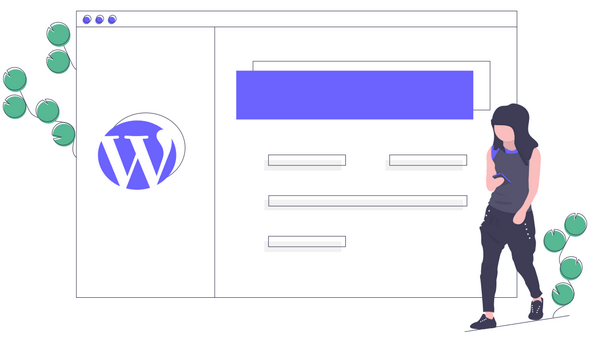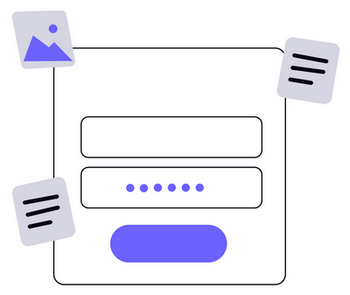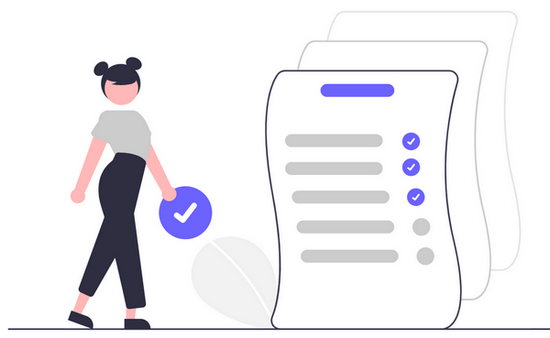You’re not just launching a company. You’re becoming a steward of other people’s information.
In an era where a single data leak can damage a reputation or result in steep regulatory fines, protecting customer data from the outset isn’t optional—it’s essential for operational success.
Too often, founders wait until a breach or near-miss forces them to react. But taking a proactive approach doesn’t just reduce risk—it builds trust and stability from the start.
It builds trust. It shows you respect your customers enough to protect what they’ve given you. And it can differentiate you in a crowded market before you’ve even made your first sale.
Building a Business? Learn How To Protect Customer Data
If You Are Using WordPress, Lock It Down

WordPress powers millions of small business sites, making it one of the most frequently targeted by automated attacks.
That means your plugins, themes, and admin settings need constant attention, not just setup and forget.
Start by enabling automatic core updates, using well-maintained plugins, and disabling XML-RPC unless necessary. Limit login attempts, require strong passwords, and hide your admin login URL to reduce brute-force exposure.
Most importantly, protect customer-facing forms with SSL encryption and support your site with a reliable backup and security plugin to safeguard against data loss.
Invest in Knowledge That Strengthens Your Foundation
You don’t need to be a full-stack engineer to build a security-conscious business, but you do need someone on the team who understands the basics.
For startups running lean, technical upskilling isn’t just smart—it’s survival.
Structured programs that focus on IT certifications and career advancement offer an affordable way to embed security skills into your core team, even before your first hire.
These certifications don’t just teach tools—they reinforce a mindset of compliance, accountability, and risk mitigation that can inform everything from your architecture to your access policies.
When the threat isn’t “if” but “when,” in-house literacy becomes one of your most defensible assets.
Train Your Team, and Limit Their Reach

It’s not always a malicious outsider that puts your data at risk. It’s the well-meaning employee who stores client records in their inbox or shares logins over Slack.
Early-stage startups often function with blurred roles, but when it comes to data access, clarity is security. Define who needs what, and enforce it.
Start by limiting team access rights to only the data each person needs to do their job.
Train your staff—not once, but regularly—on phishing, password hygiene, and what counts as sensitive.
Encrypt Everything, Especially What No One Sees
Too many startups assume encryption is just a checkbox.
In practice, it’s often neglected where it matters most: at rest, in backups, and between third-party tools.
Make encryption both for transmission and storage a default setting, not an upgrade. Apply it to any system holding personal data—your email marketing tools, analytics dashboards, support platforms.
Even temporary files stored in cloud folders need this layer of protection.
Remember: This is about reducing the blast radius when something breaks.
Move Past Passwords Before They Become Your Weak Spot

Passwords are still necessary, but they can no longer stand alone. Weak or reused credentials remain one of the most exploited attack vectors.
Implement two-factor authentication wherever possible, and where feasible, start transitioning towards biometric security or hardware keys. Make credential hygiene part of onboarding.
Don’t wait for your first breach to discover which logins were shared, which tools were left wide open, and which freelancers still have access months after their contract ended. Build exit protocols and audit them.
Vet Your Vendors—and Their Defaults
You might build with great care, only to have your data leaked by a third-party service you integrated without scrutiny.
Startups often plug in tools quickly, accepting default permissions and data retention policies. Instead, ask what data is being stored, for how long, and by whom. Privacy isn’t a footnote—it’s a design constraint.
Bake it in from the start by treating privacy to be taken into account at every stage of your architecture.
Choose tools that let you manage data without jumping through hoops.
Keep Auditing. It’s Never “Done.”

Good intentions degrade. Settings drift. Vendors change. The system you designed last year might not reflect how you’re operating now.
That’s why small business data protection is a comprehensive framework, not a single checklist. Run quarterly audits.
Test your forms and permissions. See what’s being collected that you don’t need. The goal isn’t perfection—it’s conscious iteration.
Keep asking: if we lost this data tomorrow, who would it affect, and what would that cost?
Wrapping Up
Building a business is already risky. Don’t add avoidable exposure to the mix. Protecting customer data isn’t just a compliance exercise—it’s a growth strategy.
It makes your company safer, smarter, and more credible. It’s one of the few things you can do early that will still serve you at scale.
And perhaps most importantly, it shows your customers you’re worthy of their trust, not someday, but from day one.
Discover the latest insights and tools for entrepreneurs, designers, and tech enthusiasts at WP Breaking News, your go-to source for staying ahead in the digital world!
WPBN is curated news aggregator website focusing on trending and hot news from the WordPress community.






